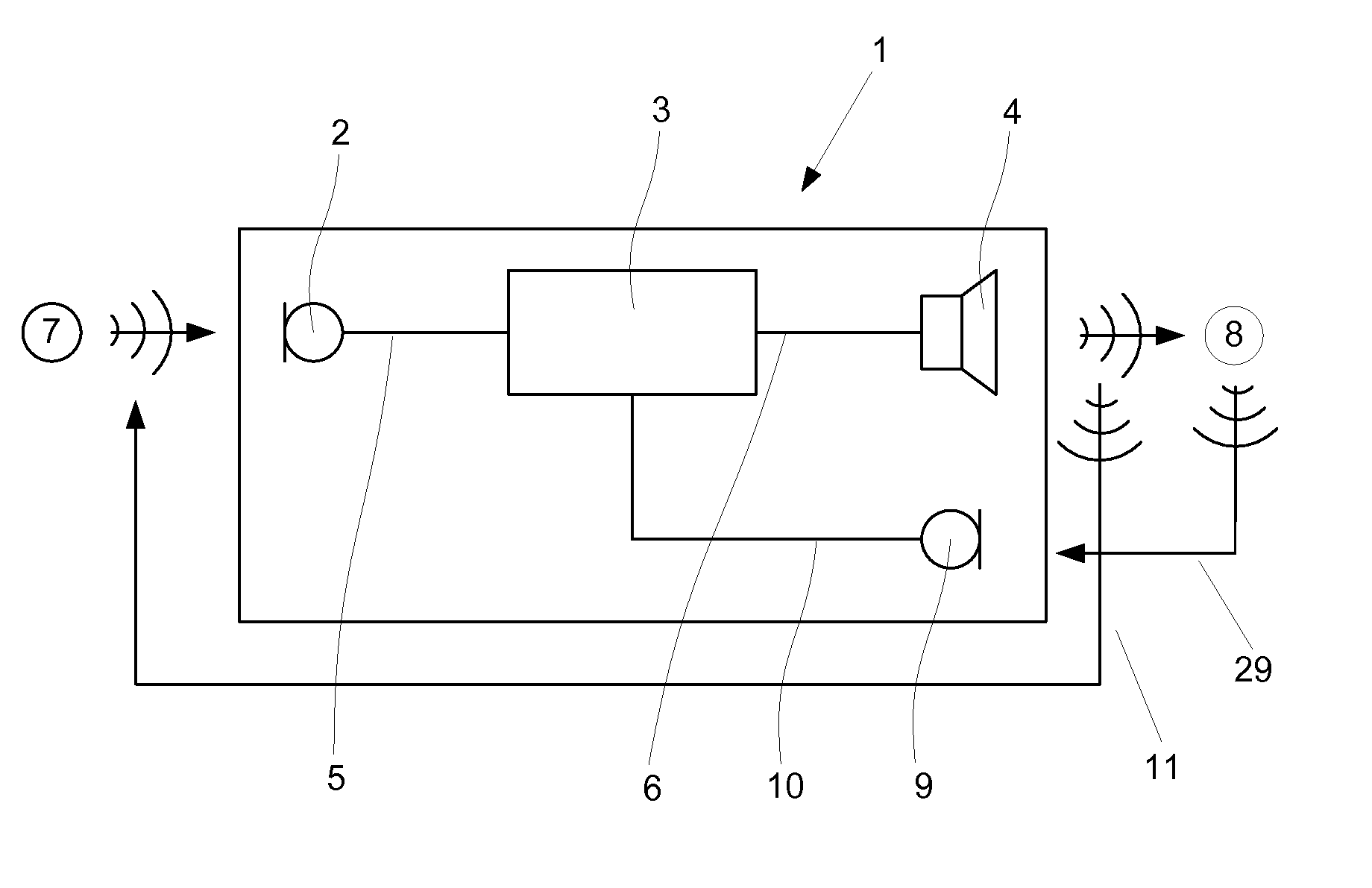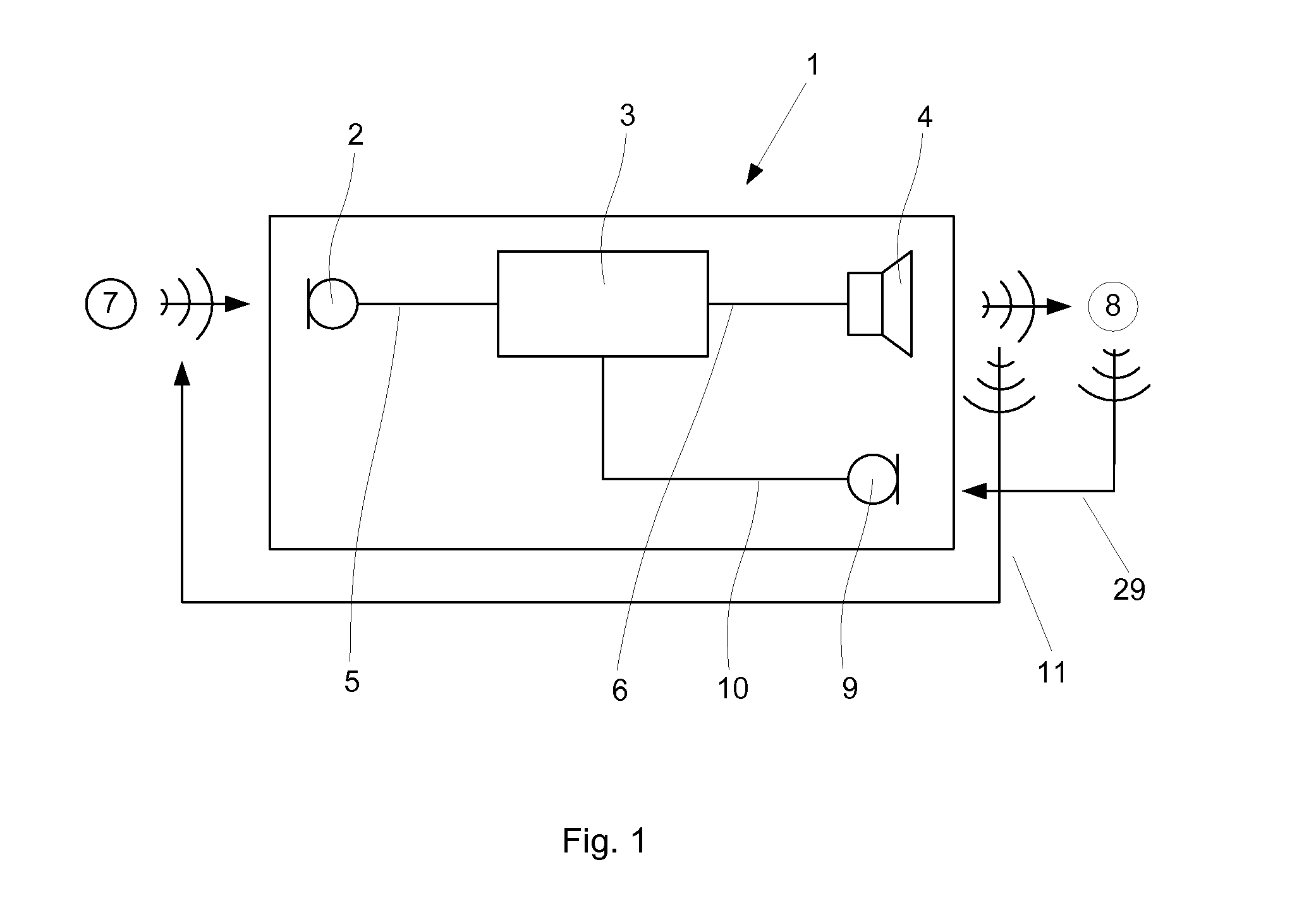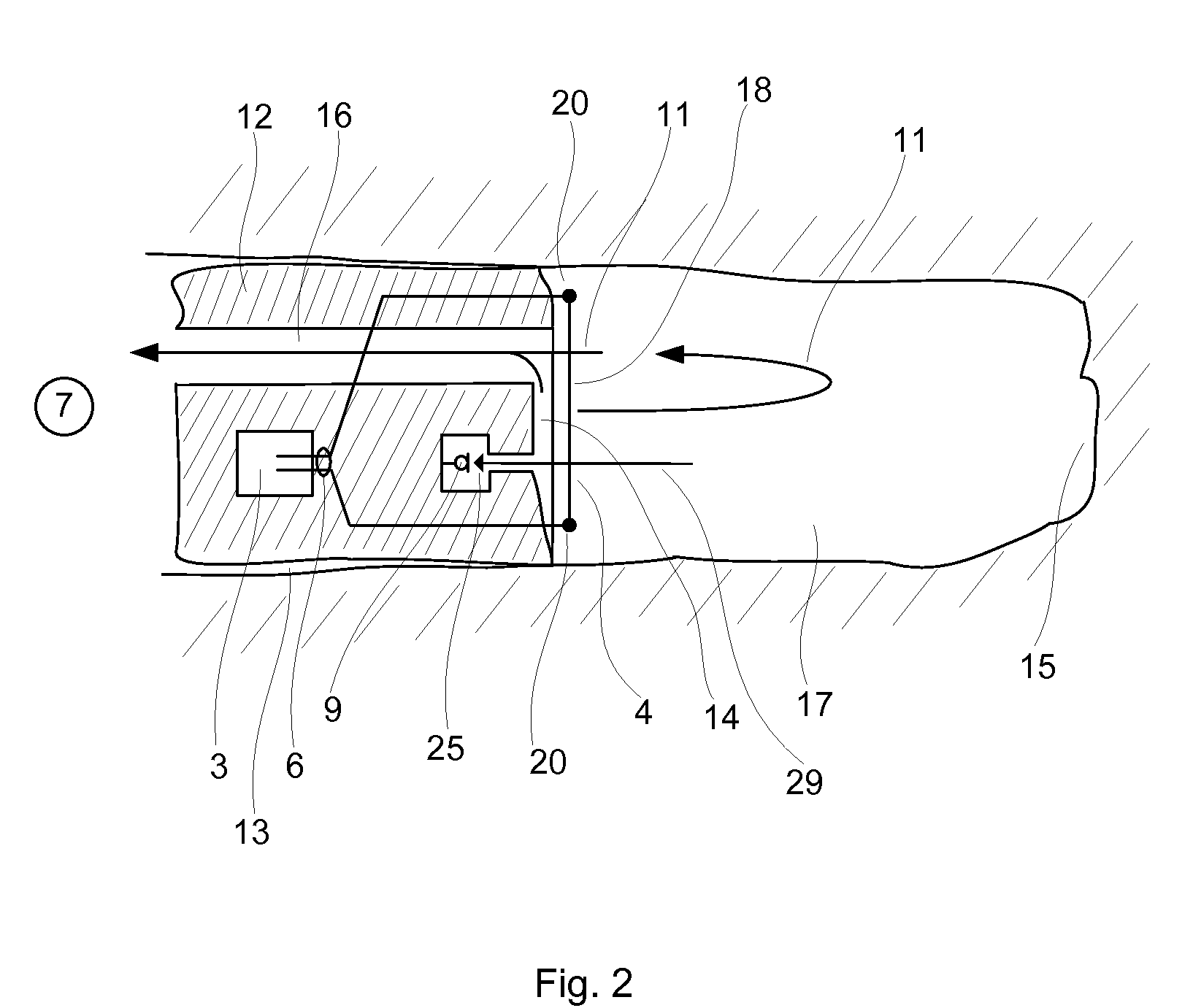Hearing device
a hearing device and electronic technology, applied in the field of hearing devices, can solve the problems of affecting the frequency of hearing devices, and affecting the operation of hearing devices, so as to reduce the frequency of a portion, reduce the amount of undesired high-frequency components, and save switching energy in the device
- Summary
- Abstract
- Description
- Claims
- Application Information
AI Technical Summary
Benefits of technology
Problems solved by technology
Method used
Image
Examples
first embodiment
[0062]The ear plug 12 shown in FIG. 2 is comprised in a hearing device 1 (see FIG. 1) according to the present invention. The ear plug 12 may constitute the entire hearing device 1 or it may comprise only parts hereof, e.g. the receiver 4 and a part of the signal conditioning means 3. In the latter case, the ear plug 12 may be connected to the remaining parts of the hearing aid 1 via e.g. an electrical or a wireless connection (not shown). The ear plug 12 is located in an ear canal 13 of a person, whereby it separates an inner portion 17 of the ear canal 13 from the person's surroundings 7. The ear plug 12 has an inwardly directed surface 14 facing the inner portion 17 of the ear canal 13 and thus also facing the tympanum 15 at the innermost end of the ear canal 13. The receiver 4 comprises a thermoacoustical transducer 18 comprising a disc-shaped body formed from a carbon nanotube thin-film similar to the ones described by Lin Xiao et al. The carbon nanotube thin-film comprises car...
second embodiment
[0064]The ear plug 12 partly shown in FIG. 3 is comprised in a hearing device 1 (see FIG. 1) according to the present invention. The thermoacoustical transducer 18 comprises a three-dimensional body substantially in the shape of a toroid with its axis of symmetry 27 arranged substantially perpendicular to the inwardly directed surface 14. The carbon nanotube fibres 18 are enclosed in a membrane 22 formed from a material suitable for allowing acoustical energy to pass through itself and at the same time protecting the fibres against e.g. ear wax, moisture and dust. Suitable materials may be selected from e.g. rubber, silicone or various polymer-based materials. An opening 23 through the centre of the toroid extends the vent 16 towards the inner portion 17 of the ear canal 13 (see FIG. 2). Shaping the thermoacoustical transducer 18 as a three-dimensional body allows for incorporating more carbon nanotube fibres in the transducer 18, thus allowing a higher acoustical signal output than...
third embodiment
[0065]The ear plug 12 shown in FIG. 4 is comprised in a hearing device 1 (see FIG. 1) according to the present invention. The carbon nanotube fibres of the thermoacoustical transducer 18 are incorporated in a resilient member 24, which has the shape of a circular cylinder and is dimensioned to close the ear canal 13 when inserted therein, whereby it separates an inner portion 17 of the ear canal 13 from the person's surroundings 7 (see FIG. 2). The resilient member 24 is formed from a foam material, which allows acoustical signals to travel relative unhindered through it. The fibres may be dispersed or distributed evenly in the resilient member 24 or e.g. concentrated in specific locations or volumes within the resilient member 24. This allows for a large flexibility in shaping the radiating body of the thermoacoustical transducer 18. The remaining parts of the ear plug 12 are located in a housing 28, which has a smaller diameter than that of the ear canal 13, thus allowing the vent...
PUM
 Login to View More
Login to View More Abstract
Description
Claims
Application Information
 Login to View More
Login to View More - R&D
- Intellectual Property
- Life Sciences
- Materials
- Tech Scout
- Unparalleled Data Quality
- Higher Quality Content
- 60% Fewer Hallucinations
Browse by: Latest US Patents, China's latest patents, Technical Efficacy Thesaurus, Application Domain, Technology Topic, Popular Technical Reports.
© 2025 PatSnap. All rights reserved.Legal|Privacy policy|Modern Slavery Act Transparency Statement|Sitemap|About US| Contact US: help@patsnap.com



